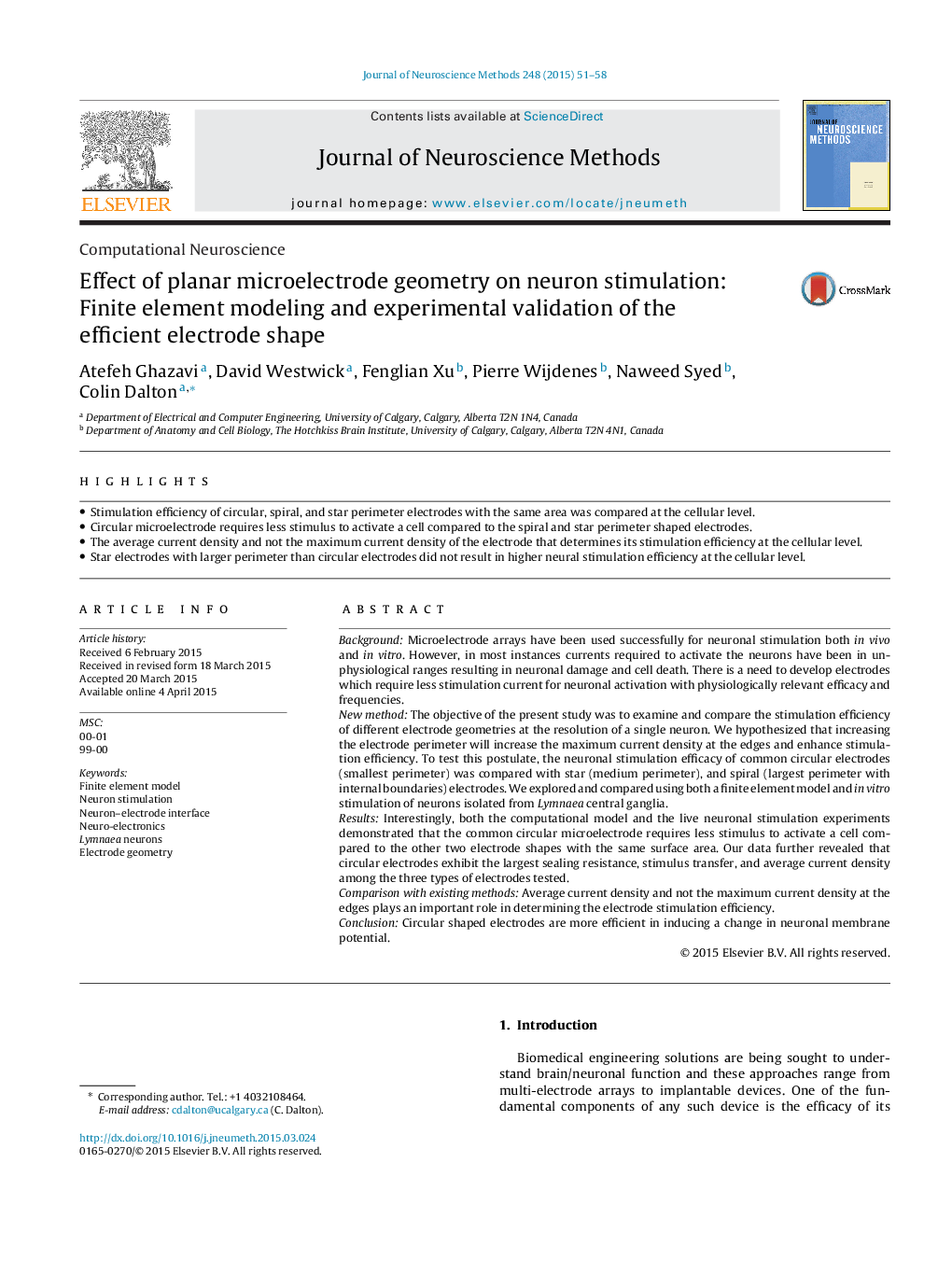| کد مقاله | کد نشریه | سال انتشار | مقاله انگلیسی | نسخه تمام متن |
|---|---|---|---|---|
| 6268250 | 1614621 | 2015 | 8 صفحه PDF | دانلود رایگان |
- Stimulation efficiency of circular, spiral, and star perimeter electrodes with the same area was compared at the cellular level.
- Circular microelectrode requires less stimulus to activate a cell compared to the spiral and star perimeter shaped electrodes.
- The average current density and not the maximum current density of the electrode that determines its stimulation efficiency at the cellular level.
- Star electrodes with larger perimeter than circular electrodes did not result in higher neural stimulation efficiency at the cellular level.
BackgroundMicroelectrode arrays have been used successfully for neuronal stimulation both in vivo and in vitro. However, in most instances currents required to activate the neurons have been in un-physiological ranges resulting in neuronal damage and cell death. There is a need to develop electrodes which require less stimulation current for neuronal activation with physiologically relevant efficacy and frequencies.New methodThe objective of the present study was to examine and compare the stimulation efficiency of different electrode geometries at the resolution of a single neuron. We hypothesized that increasing the electrode perimeter will increase the maximum current density at the edges and enhance stimulation efficiency. To test this postulate, the neuronal stimulation efficacy of common circular electrodes (smallest perimeter) was compared with star (medium perimeter), and spiral (largest perimeter with internal boundaries) electrodes. We explored and compared using both a finite element model and in vitro stimulation of neurons isolated from Lymnaea central ganglia.ResultsInterestingly, both the computational model and the live neuronal stimulation experiments demonstrated that the common circular microelectrode requires less stimulus to activate a cell compared to the other two electrode shapes with the same surface area. Our data further revealed that circular electrodes exhibit the largest sealing resistance, stimulus transfer, and average current density among the three types of electrodes tested.Comparison with existing methodsAverage current density and not the maximum current density at the edges plays an important role in determining the electrode stimulation efficiency.ConclusionCircular shaped electrodes are more efficient in inducing a change in neuronal membrane potential.
Journal: Journal of Neuroscience Methods - Volume 248, 15 June 2015, Pages 51-58
